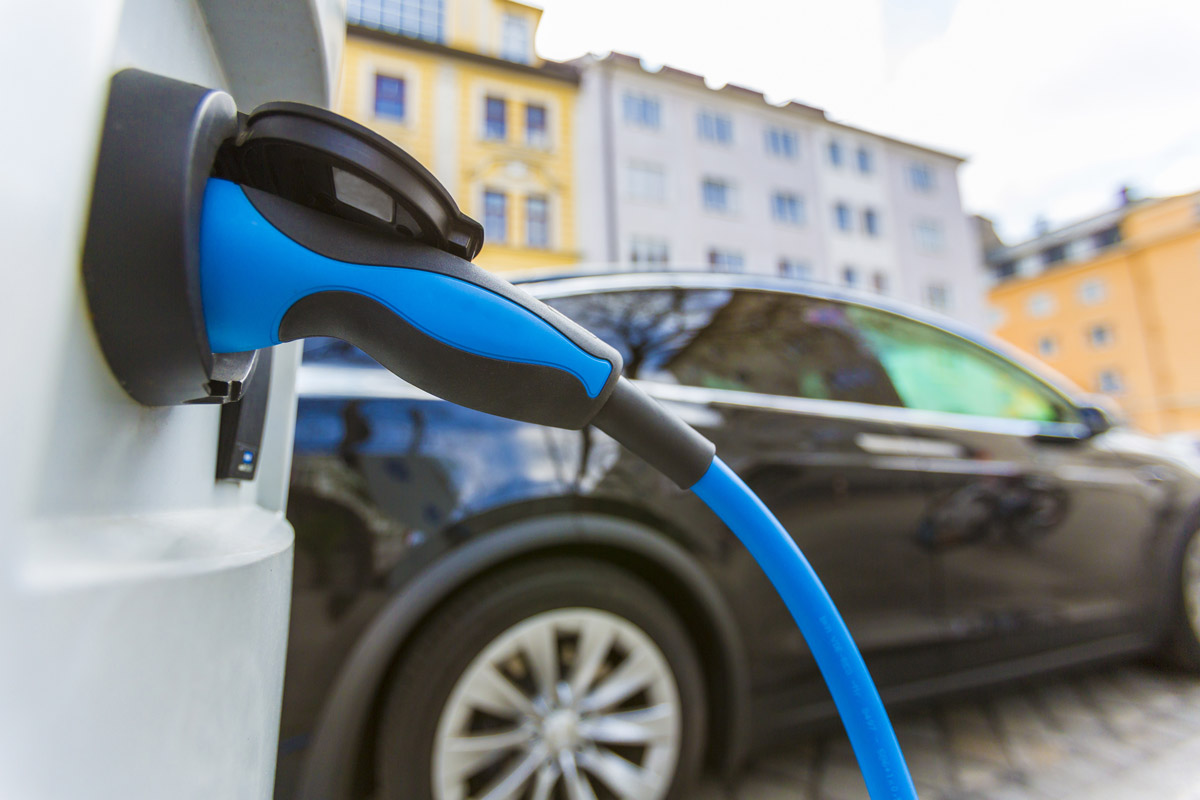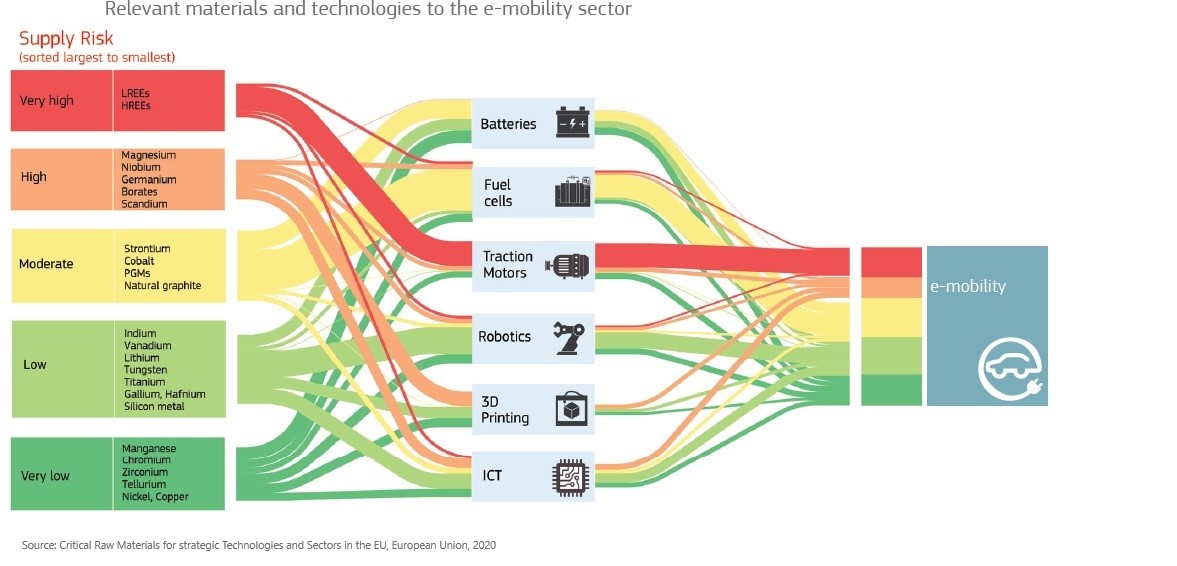Electromobility
Combined with an efficient energy grid, electrification, automation and digitalisation can provide new approaches to meet the future challenges of mobility. Copper is one of the key materials that make this transition possible.
On average, an electric vehicle contains almost three times as much copper as a vehicle with a combustion engine. Half of this copper is found in the accumulator. The generation of electricity from renewable energies and the infrastructure needed to charge electric vehicles also create a high demand for copper.
The lithium-ion accumulator alone consists of about 18% copper, since the cathode is always made of aluminium and the anode of copper as a carrier material. At least one drive motor and one converter contribute to the fact that there is easily three times as much copper in such a vehicle as in a conventional one with an internal combustion engine – namely around 25 kg in the average petrol-engined medium-sized vehicle. For the future, it is even expected that up to 40 kg will be found, since the desire for more comfort means that many small electric motors will be needed that contain copper. The greatest increase in copper weight is to be expected in the area of the new components added to electrified vehicles – drive energy storage, electric motor, high-voltage vehicle electrical system, power electronics, etc. In the case of a plug-in hybrid, this can be more than 70 kg of copper in the mid-range, while the e-car is just under that.

According to research by IDTechEx (2020), the introduction of electric traction motors in road vehicles will lead to a significant increase in copper demand over the next 10 years. The study, commissioned by the International Copper Association (ICA), shows that by 2030 more than 250,000 tonnes of copper per year will be used as part of the windings in electric traction motors in on-road electric vehicles. The increase in copper demand follows the development of the global automotive market, where pure battery electric cars are expected to gain the most market share at the expense of internal combustion engines and hybrid vehicles. By 2030, electric and plug-in hybrid cars will account for about 19 per cent of the total market, rising to 72 per cent by 2040 in a declining automotive market that is expected to peak in 2031, according to IDTechEx.
Assuming that 100,000 electric cars on Germany’s roads replace an equivalent number of petrol-driven cars, WVMetalle says that with average CO2 emissions of 150 g/km and a driving distance of 15,000 km, 225,000 tonnes of CO2 will be saved annually.
By the way, electric mobility is old hat for the railways: electric train transport has been around since 1879. 90% of Deutsche Bahn AG’s transport services in Germany are provided electrically.
E-mobility does not lead to copper shortage
Incidentally, copper is not one of the critical raw materials, as a recent publication by the EU Commission also underlines. This means that there is also enough material for applications in electromobility.

On average, an electric vehicle contains almost three times more copper than a vehicle with an internal combustion engine.
Are you looking for a different content?
Mobility
Copper materials guarantee mobility and can be found in all transport systems.
More